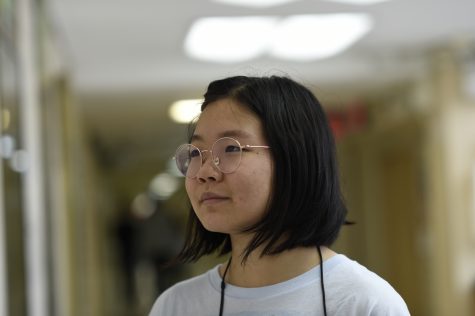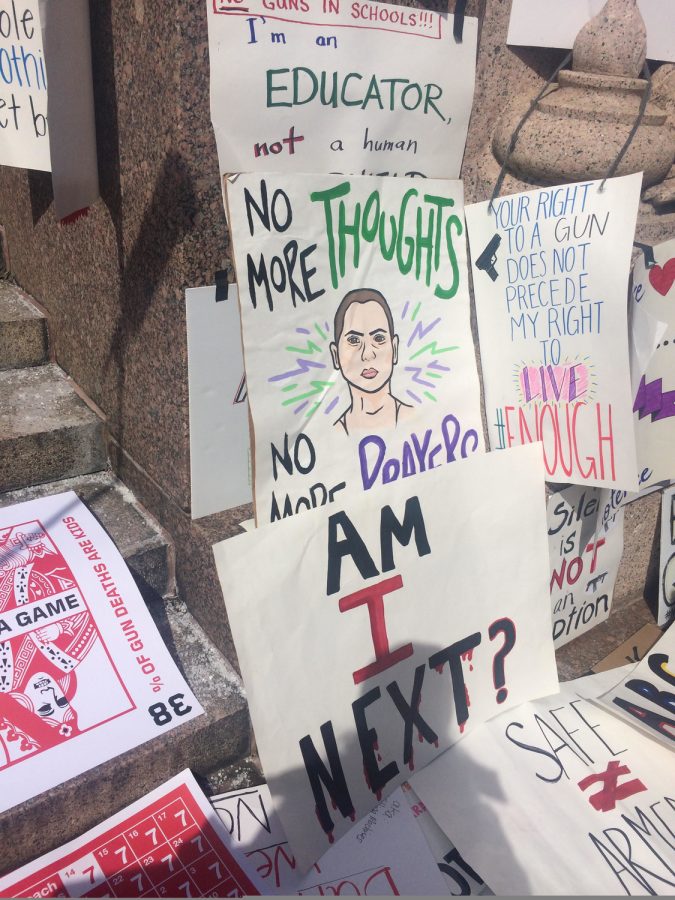The Pitfalls of the Shooter Stereotype
Edie Fine’21, board member of the Young Democrats club at Bronx Science, advocated for gun control reforms at the March For Our Lives after the Parkland shooting in 2018. “Your right to a gun does not precede my right to live. #enough,” reads one of the signs.
Involved in school activities and fairly popular, sixteen-year-old Nathaniel Berhow of Santa Clarita was always considered an “average kid.” He showed up to school on time, went to all of his classes, and spent time with his friends after school and during track meets. This reputation made his actions on November 14, 2019, particularly shocking to those who knew him. Berhow opened fire on a group of students at Saugus High School, injuring five and killing two before shooting himself. Teachers, coaches, neighbors, and even the victims of the shooting themselves were in disbelief when they learned who the assailant was. Berhow never fit the weird, quiet kid mold of what some call a “typical school shooter.” They wondered about the motive behind the incident, offering police whatever information they had about his life at home or indications of the “troubled past” often associated with shooters but there was little to note. As the community mourns the victims, they continue to search for any signs that could have indicated what was to come.
In this incident, as well as many other shootings that have occurred in 2019, the “school shooter” stereotype and whether the perpetrator fits it was a major area of focus. The emphasis on associating types of people to crimes, like the quiet kid in the back of the class being associated with school shooters, is incredibly detrimental to the conversation, people who work in or go to school, students who are naturally quiet and keep to themselves, as well as the psychological health of the victims. Talking about stereotypes frames the issue as if we should avoid people who fit the mold inadvertently places the blame on the victims for not heeding the “warning signs,” completely derailing discussions of the real problems.
What really needs to be focused on is how any kid, regardless of their accordance with the “school shooter” stereotype, gets access to a machine made to kill. Victims of recent shootings are bravely pushing to shift the narrative to gun control and the controversy around it.
Within Bronx Science, gun control is a conversation many students have after every other current event and every lockdown drill. As students, it can be stressful even thinking of another student as a danger to the school, let alone pinpointing a potential shooter. Jenny Lee ’20 discussed the difficulty in pointing out potential shooters, even when the warning signs are plentiful. “In the aftermath of a shooting, it’s difficult for victims to hear that the punishment for the perpetrator has been lessened due to mental illness, most often when they’re white, and that when they’re black or brown, [they’re considered] representative of the whole group. Mental health aid, a potentially important way to deal with ‘warning signs,’ isn’t even as easily accessible to people of color. So, it’s not even just a matter of listening to the kids—it’s a matter of taking weapons capable of such atrocities away,” Lee said.

Jenny Lee ’20 finds the prevalence of the conversation to be necessary but exhaustive. “Gun control always seems to come to the argument of prioritizing someone’s individual rights over what’s generally good for the people. Regardless, the more time we take compromising between this thematic opposition, the more innocent lives are lost or put in severe danger,” Lee said.
Regardless, serious reconsideration on gun restriction is the primary solution for a problem so prevalent that when five students are shot, our reactions start with “well, at least it wasn’t ten.” Because when people have the ability to take down dozens at a time, we are conditioned to just be happy more weren’t hurt. But as Edie Fine ‘21 put it,“We should stop fixating on the narrative of the school shooter and instead focus on the vehicles that people are using to murder so many people at a time.” A safer world is possible, but it’s up to us to focus on what factors really cause harm.
The emphasis on associating types of people to crimes is incredibly detrimental to the conversation and the psychological health of the victims.
Eshika Talukder is the Spotlight editor for ‘The Science Survey’ and an Athletics Section Reporter for ‘The Observatory.’ She believes that journalistic...
Edie Fine (she/they), an Editor-in-Chief for ‘The Science Survey,’ is thrilled to be on the journalism staff for a second year. She loves telling stories,...











